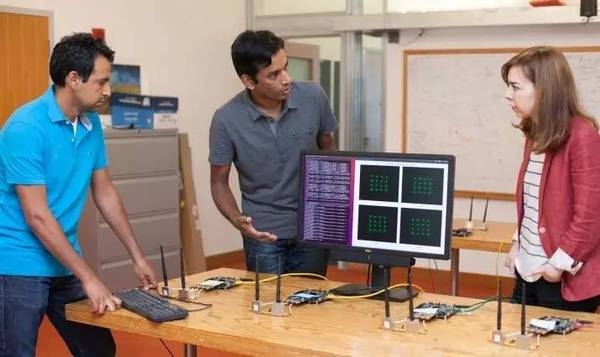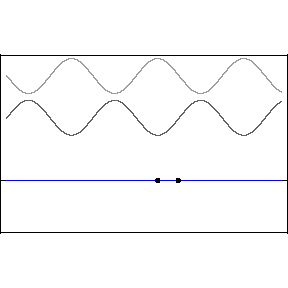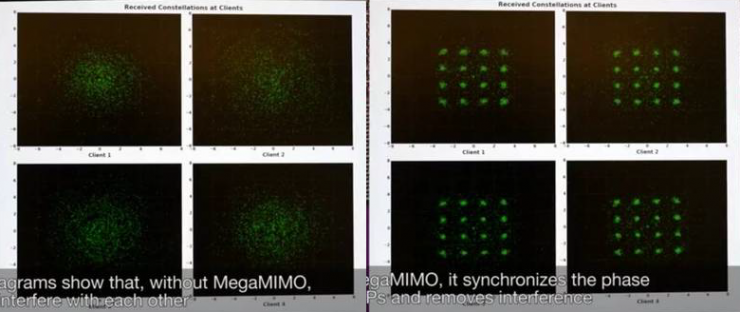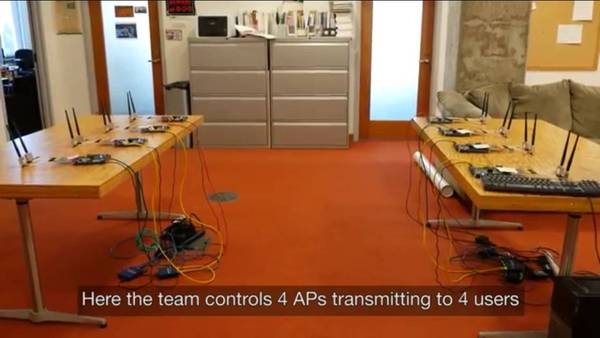
MIT's research team
With the rapid development of the mobile Internet, people can't live without WiFi in their daily lives and work. However, when we link WiFi signals in a public place, we must have encountered such a problem at a high frequency: the speed is slow, even worse than the 4G that comes with the phone. And with the increase in the number of users accessing the public network, this problem becomes more apparent.
In this regard, a research team from the Massachusetts Institute of Technology (MIT) Computer Science and Artificial Intelligence Laboratory (CSAIL) has recently developed a "MegaMIMO 2.0" multi-signal access point collaboration system that can integrate WiFi in crowded areas. The network speed increased by more than 3 times, effectively solving this problem.
Traditional programIn fact, the reason for the poor speed of the WiFi network in crowded areas is that everyone should know: The network bandwidth is limited, and the more people share, the less people can get into each person's hands.
Therefore, for this reason, the following solutions are generally used : Arranging multiple access points in densely populated areas to share the access pressure. However, this simple and crude solution does not work well. This is because the WiFi signal acts as an electromagnetic wave and is launched into space at a fixed frequency. When multiple sources appear in the same space at the same time, and they also send signals with different phases at the same frequency, it is easy to produce signal interference. Here, the so-called “different phase at the same frequency†is very likely to occur (since it is relatively simple to guarantee the same frequency, but it is difficult to have the same phase), as shown in the figure, with the same frequency, with the phase of the two waveforms Continuous changes, in most cases, will not only increase the signal strength, but will cause varying degrees of signal attenuation.

Interference with different phase waveforms at the same frequency
With regard to this scheme, since the current 5GHz frequency is gradually accepted by all except the 2.4GHz frequency router, if the two different frequency signals are cross-covered, this problem can be effectively avoided. However, this also introduces a new problem at the same time: Since the signal in the 5GHz band is used less frequently, it is not likely to cause signal interference. However, due to the high frequency, the short wavelength, and the weak diffraction ability, the walls in the city are more complex in structure. The public area is not actually suitable.
Another way to avoid signal interference is to use time division multiplexing between multiple access points, that is, only one router actually works at each time point, and other routers take a rest. Although this approach ensures no interference between different frequencies, the synergy of multiple access points is reduced. Therefore, the speed improvement in crowded areas is not significant.
Based on this situation, researchers from MIT have developed a multi-access cooperating system, MegaMIMO 2.0, in the same frequency and phase position.
MegaMIMO 2.0 collaboration solution
On the left is the traditional interference spectrum, and on the right is the non-interference spectrum after using MegaMIMO 2.0
An important change in this system over traditional practices is that the signal phases of different sources are also synchronized. Researchers through a special signal processing algorithm, the transmission phase of each signal source through mutual feedback and re-correction process, gradually adjusted to the uniform pace. In this way, multiple access points can transmit the same-phase signals in the same frequency, which greatly increases the WiFi speed in one space.
According to the person in charge of the team, the truth is very simple, just as if we were to turn on two radios in one room to listen to the same FM channel. Usually the announcer's voice cannot be synchronized. What we did was not to change the voice of the announcer, but to adjust the timing of the announcer's voice slightly.
The MegaMIMO 2.0 hardware is similar in shape to a standard router. It is also composed of main modules such as the main processor, real-time baseband processing system and signal transceiver, but the internal integrated algorithms are quite different. The team members arranged four independent access points and four simulated access users in a ten-square meter room for the actual measurement. The results show that the speed of WiFi using the MegaMIMO 2.0 system can reach 330% of the traditional layout and increase more than 3 times.

Currently, researchers are further optimizing the MegaMIMO 2.0 system to achieve the ultimate goal of commercial success. At the same time, the team is also trying to expand the capacity of the MegaMIMO 2.0 system and plans to achieve the goal of more than a dozen routers working together in the future, bringing faster data transmission speeds.
Lei Fengnet (search for "Lei Feng Net" public concern) believes that with the continuous efforts of scientists, the WiFi experience in crowded areas such as large-scale conferences and competitions will become better and better.
Related Reading:
Russia's solar-powered drone with WiFi can make the first flight successfully, and it will last for 50 hours.
MacBook or will support LTE network, no longer have to find WiFi everywhere
MIT New Router Chip: Rescue Data Centers with Algorithms
